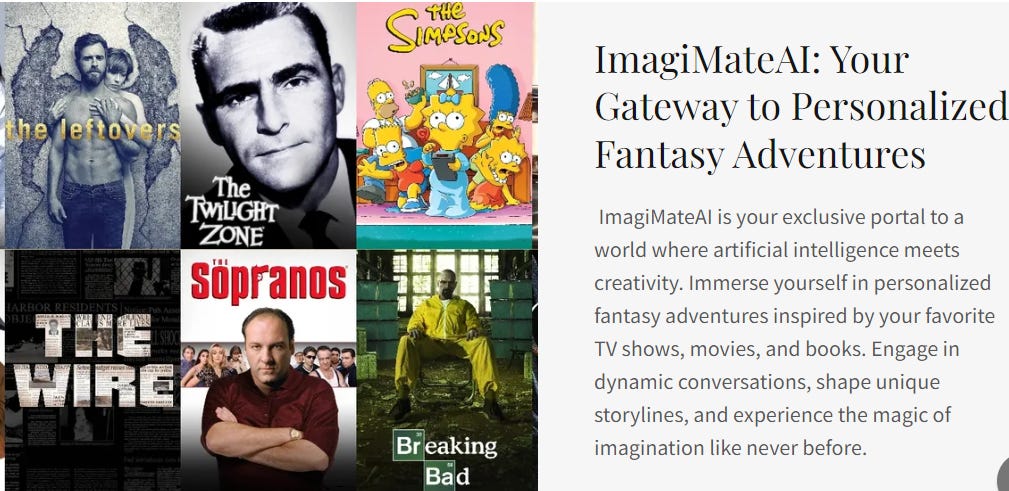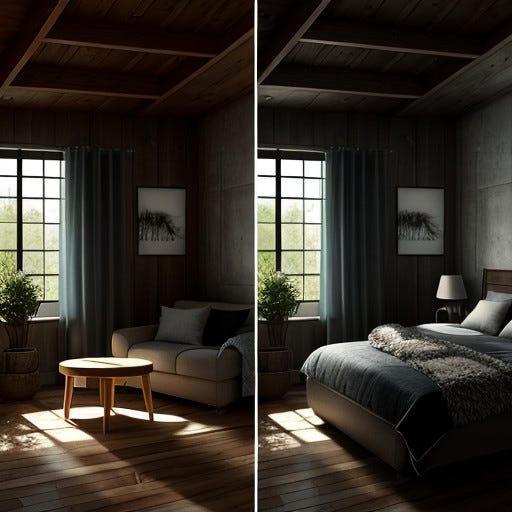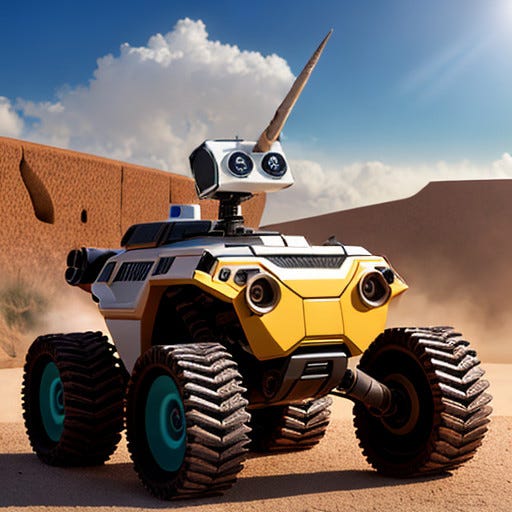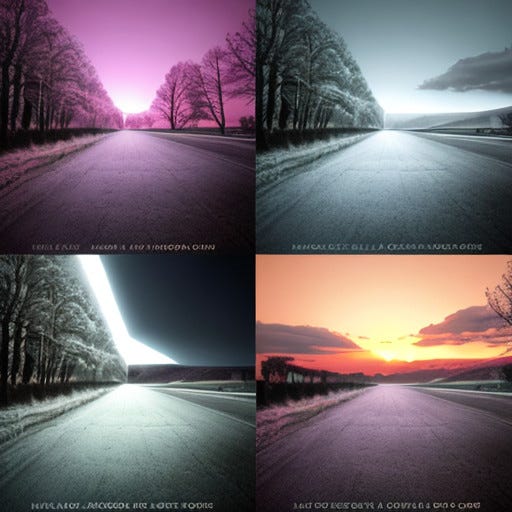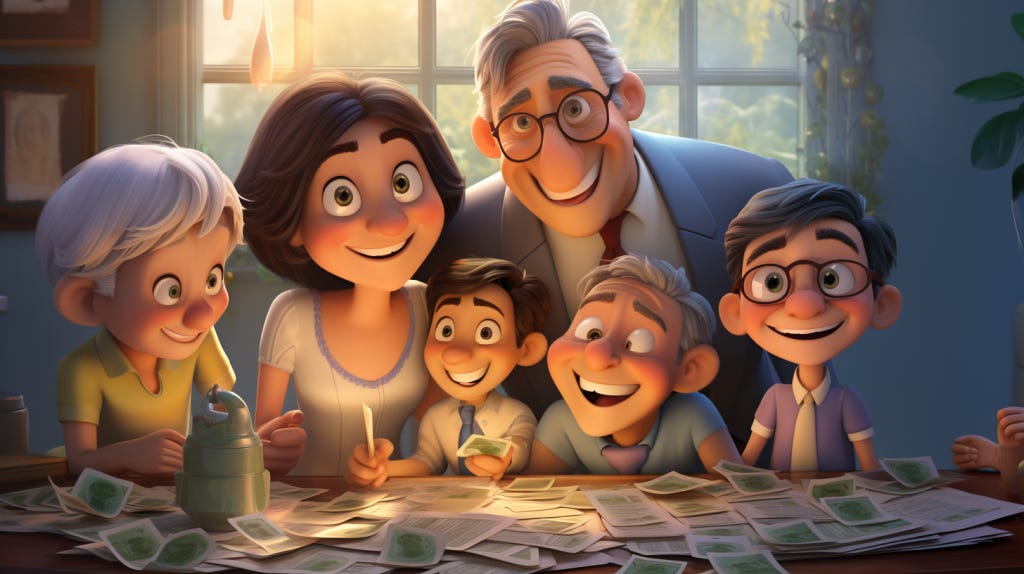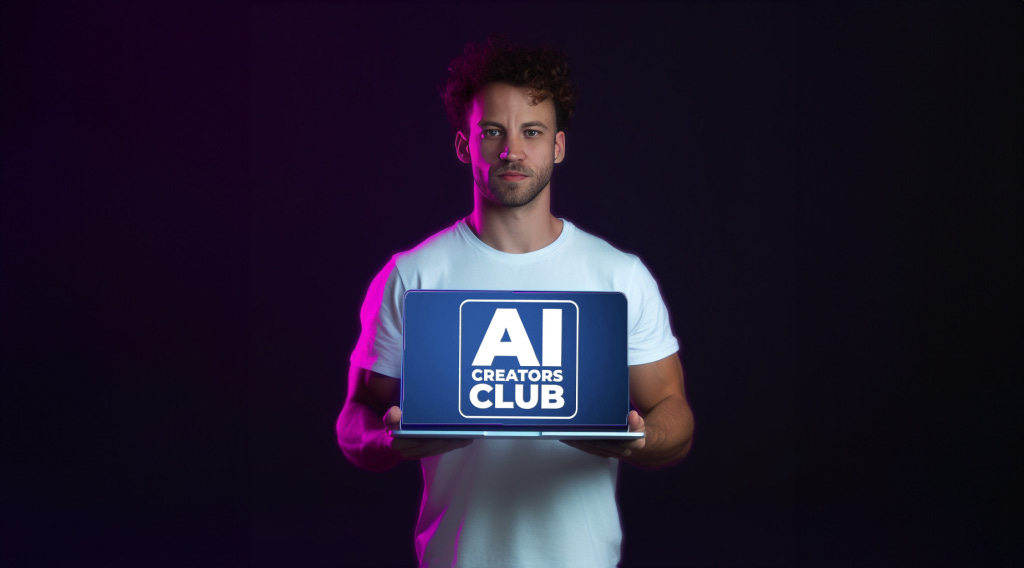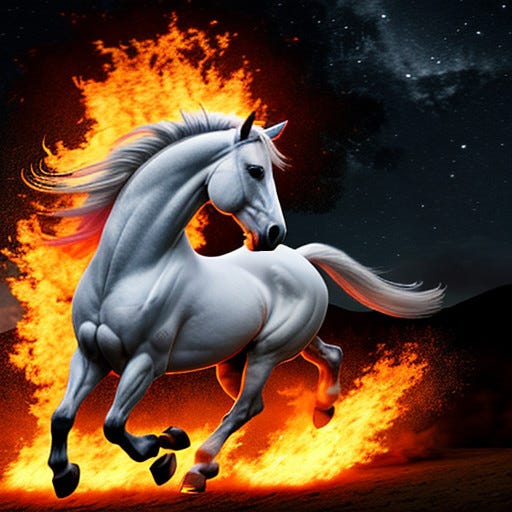The Master Guide to Prompting DALL-E 3 Creatively with ChatGPT
DALL-E 3 Images So Realistic People Can't Tell They're AI-Generated - Thanks to These Pro Tips
Introduction
This comprehensive guide provides extensive techniques and strategies for crafting effective prompts to generate custom images with DALL-E 3 using ChatGPT as an AI assistant. Mastering prompt engineering is essential to fully harness DALL-E 3’s exceptional creative capabilities for your visual goals.
With well-constructed prompts, you can imaginatively produce stunning AI artworks in any style you desire – from photorealism to abstract expressionism, impressionist landscapes to surrealist dreams. But reaching DALL-E 3’s potential requires learning prompting best practices through experimentation, iteration, and guidance from conversational AI systems like ChatGPT.
This guide covers core prompt writing principles like using descriptive language, detailing subjects and composition, directing lighting and color, specifying styles and mediums, guiding perspective and framing, setting realism levels, and referencing art contexts. You’ll learn troubleshooting for defects in generated images, templates for prompt construction, advanced techniques like erasing elements, and step-by-step workflows for prompting via ChatGPT.
Equipped with these skills, you can traverse DALL-E 3’s vast creative universe to manifest virtually any visual concept through AI-generated art. Let's begin unlocking your imagination's potential.
An Introduction to DALL-E 3 and ChatGPT
DALL-E 3 is an exceptionally capable AI system from Anthropic built using a neural network architecture fine-tuned for creative applications. It excels at interpreting natural language text prompts and translating them into realistic or abstract images that manifest the described scene.
DALL-E 3 represents a major leap forward in coherence, fidelity, and alignment with prompts compared to previous AI image generators. The results align remarkably well with human prompts and artistic intentions, enabled by Anthropic’s careful dataset curation and novel training methods.
ChatGPT is an advanced conversational AI assistant created by Anthropic to have thoughtful, nuanced conversations in natural language. You can describe a visual concept, creative goal, or problem space to ChatGPT, and it will suggest tailored solutions – like generating prompt text optimized for DALL-E 3.
ChatGPT has been trained on a huge dataset of online conversations, helping it account for cultural/world knowledge when making suggestions relevant to your context. It provides human-like responses augmented by its AI capabilities for recall and generative language skills.
Combining DALL-E 3’s exceptional image generation talents with ChatGPT’s conversational prompting abilities provides an incredibly powerful creative tool for bringing your visual ideas to life. Let's dive deeper into crafting amazing prompts.
6 OF THE BEST AI TOOLS
HEADLIME IS THE GO-TO GPT-3 TOOL FOR MARKETERS.
WRITESONIC IS ONE OF THE BEST ARTIFICIAL INTELLIGENCE-POWERED COPYWRITING GPT-3 TOOLS.
Getting Started with Prompts for DALL-E 3
When first exploring DALL-E 3, it's best to take an iterative approach to prompting. Rarely will your initial prompt lead to a perfect generated image on the first try. Instead, view the prompting process as a collaborative feedback loop between you and the AI.
Begin by briefly summarizing the key visual elements, mood, style, composition, and medium you want DALL-E 3 to render in 1-3 concise sentences. This high-level prompt provides important framing and context.
From there, you can progressively add more details and specifications like subject attributes, lighting cues, color directions, art genres, camera perspective, etc. Strike a balance between too sparse and overly verbose.
Review the initial images critically, identify areas for improvement, then refine the wording to better capture your creative vision. Treat each iteration as a progression towards the ideal prompt. Maintain an open creative dialog with the AI through your descriptive language.
Choosing a Descriptive Style for Your Prompts
The linguistic style you use to describe a desired image significantly influences what DALL-E 3 generates. Consider using:
- Short imperative phrases – Quickly convey major elements e.g. “An alien octopus playing drums”. Goes for brevity.
- Full descriptive sentences – Adds nuance and context e.g. “An enormous blue alien octopus skillfully playing a glowing futuristic drum kit on a rock concert stage.” Uses complete sentences.
- Paragraph descriptive style – For highly complex scenes and compositions e.g. describing multiple characters, detailed clothing and expressions, extensive environmental context.
- Mixed modes – You might use terse imperatives and short sentences for the core elements, then switch to paragraph style prose for elaborating on background details and other subtleties you want to highlight.
ChatGPT can provide feedback on which descriptive style will likely work best for your specific prompt and creative goals. Don’t be afraid to experiment – the impact word choices have on the output image is often surprising.
Describing Overall Composition and Setting
When envisioning your AI-generated scene, begin by establishing:
- Indoor vs outdoor setting – This provides core environmental context.
- Time of day and lighting – E.g. nighttime, dusk, dawn, midday. Sets lighting expectations.
- Overall mood and atmosphere – Simple descriptors like “ominous”, “lighthearted”, or “mystical” convey the intended feel.
- Geographic, temporal, fictional settings – Real or imagined location and time period or future era.
- Prominent scenery and environmental elements – Things like trees, rivers, architecture, or celestial bodies that should feature prominently in the background or setting.
You can provide basic compositional positioning like “In the foreground is..., in the middle ground..., background shows...” This gives DALL-E 3 cues on where to focus elements.
Also consider tight close-ups vs wide expansive landscapes based on your core idea. Direct the eye through intentional composition.
Adding Details on Subjects, Characters, and Objects
Once you’ve described the broader scene and setting, start detailing key subjects, characters, creatures, and objects that should appear and interact in your imagined space:
For people and anthropomorphic characters, specify attributes like:
- Gender, ethnicity, age, body shapes
- Clothing styles and colors, uniforms, costumes, accessories
- Hairstyles, facial hair, makeup, headwear
- Tools, musical instruments, accessories they hold or interact with
- Facial expressions and body language that convey their emotion and actions
For creatures and objects, describe identifiable features like:
- Physical shape, size, proportions, silhouette
- Colors, textures, materials, ornamental elements
- Behavior and motion if animate; functional details if manmade objects
- Surrounding natural or environmental context
Where needed, give subjects and objects distinct names for additional context e.g. “robot Wall-E” or “unicorn Pegasus”. Build a visual hierarchy of important figures to feature and supporting elements.
Specifying Art Medium, Style, and Genre
Suggest a specific art medium, style, and genre to guide DALL-E 3’s rendering:
Medium - Painting in oils, acrylics, watercolor; pen and ink drawings; 3D or digital sculptures; photography on 35mm film or DSLR; etc.
Style - Realism, minimalism, avant-garde, expressionism, pointillism, cel shading, line drawing
Genre - Portraiture, landscape, still life, history painting, album art, movie poster, anime, comics, mosaic
You can also direct a mashup of styles e.g. “Cubist pop art painting” or “Impressionist photorealism”. Reference art periods like Baroque, Rococo, Art Deco, etc. This aids the AI’s art interpretation system.
Directing Lighting, Color Palettes, and Atmosphere
Lighting, color, and atmosphere hugely impact mood and look. Tell DALL-E 3:
- Light sources - Sunbeams, moonlight, harsh fluorescents, candle glow, spotlight
- Lighting intensity, directionality, softness, shadows
- Overall color palette - Warm, cool, high or low saturation
- Prominent colors and textures for key elements
- Special effects like sun shafts, lens flare, reflections, glitter, smoke
- Atmospheric perspective - Fog, haze, clouds, rain, snow
For lighting, clarify time of day, bounce lighting, color temperature. For mood, specify vibrant, muted, monochromatic palettes. Make your desires clear.
Guiding Camera Perspective and Framing
You can direct the scene’s point of view by specifying:
- Camera angle – Eye-level, aerial, low angle, Dutch tilt, over-the-shoulder
- Framing and zoom – Extreme close-up, medium close-up, mid-shot, wide shot
- Subject prominence – Central focus, profile, or environmental vantage point
- Orientation – Portrait, landscape, diagonal, symmetrical
- Photographic techniques – Rule of thirds, leading lines, negative space, depth of field
Conveying the desired perspective helps render proper scale, subject focus, and scene dimensionality. Define camera logic like “Framing the dragon from below looking up...” or “POV peeking over the wall...”
Indicating Level of Realism vs. Abstraction
The degree of realism vs. abstraction significantly impacts aesthetic:
- Highly realistic rendering with crisp focus and vivid detail
- Stylized rendering that communicates the essence or spirit of a subject
- Visible brush strokes, palette knife marks, smoother blends
- Perfect gradients vs. impressionist color patches
- Surreal distortions of form, proportions, space
- Traditional adherence to laws of physics, light, anatomy vs imaginative interpretations
Give DALL-E 3 creative license to render things semi-realistically unless photorealism is essential to your goal. An abstracted “essence” of a subject can heighten emotional impact.
Referencing Specific Artworks and Styles as Inspiration
You can guide DALL-E 3’s suggestions by explicitly referencing:
- Specific art pieces, paintings, sculptures as inspiration
- The distinctive stylistic traits of famous visual artists
- Established art genres, eras, movements like Cubism, Art Nouveau, Fauvism
- Aesthetics and sub-cultures known for their visual styles - psychedelic, steampunk, glitchcore, etc.
This provides helpful creative context to DALL-E 3’s art interpretation algorithms. Study influential works for inspiration.
Iterating on Prompts with ChatGPT
After generating initial images, critically review the results and ask ChatGPT followup questions to improve your prompts:
- What could be added or removed from the prompt to make it clearer?
- Does my description imply close-up framing versus a wide landscape orientation?
- What compositional or style elements are missing based on my vision?
- Should I adjust the descriptive style to be more concise or detailed?
Tweak your prompts based on ChatGPT’s feedback, then generate new DALL-E 3 images to check improvements. Repeat this process until satisfied with the result. Treat prompting as a collaboration.
Troubleshooting Issues in Generated Images
If DALL-E 3 generates unsatisfactory or flawed images, troubleshoot by:
- Cropped out elements - Resize frame to include all subjects
- Cluttered composition - Streamline prompt to simplify
- Unclear focus - Bring intended subject into sharper focus
- Wrong lighting - Specify time of day, lighting directionality
- Alien distortions of key subjects - Add more descriptive details
- Proportional anomalies - Use comparative words like “larger”, “smaller”
- Mismatch with prompt - Reword prompt for accuracy. Remove ambiguity.
Discuss the specific shortcomings with ChatGPT to get tailored suggestions for refining your prompt wording and correcting those mistakes.
Your own personal army of bots, continuously producing VIDEO CONTENT across all social media platforms.
Generating TRAFFIC, LEADS, and attracting CLIENTS, all for YOU!
Sit back, RELAX. Let Artificial Intelligence do the heavy lifting FOR YOU.
Your business transformed, a powerhouse of wealth, forging a secure future for you and your family.
But BEWARE… Those hesitant to adopt AI risk falling behind, their income dwindling, struggling to provide…
Don’t get left behind! Embrace the future.
Join our AI Creators Club.
*All images above were generated with AI
Add To Cart
Your initial payment will be $1.
After 30 days, your subscription will be renewed monthly at $37/month.
You are basically are getting access to everything for only $1 for an entire month.
No contract, no obligations. You can cancel any time.
Ethical Considerations for Prompt Design
When conceptualizing prompts, carefully consider:
- Avoiding requests for harmful, dangerous, illegal, or unethical content
- Representing diversity and inclusion thoughtfully
- Not plagiarizing existing artworks or photographers
- Seeking consent before depicting identifiable people
- Clarifying ownership of generated images
- Providing appropriate credit to the AI system used
Prompt intentionally as a responsible, ethical AI user. DALL-E 3 performs best when guided positively to uplifting creative pursuits that bring more light into the world.
Prompt Templates and Checklists
Use these templates and checklists when drafting your prompts:
Prompt Template:
[1-3 sentence summary of key elements]
[Paragraph elaborating on composition, setting, mood, style]
[Specify subjects, mediums, colors, lighting, detail level]
[Indicate camera perspective, framing, realism level]
[Reference artworks, artists, genres for context]
[Add any other details needed to achieve vision]
Prompt Checklist:
- Clear focus and main subject defined?
- Sufficient descriptive detail provided?
- Mediums, styles, genres indicated?
- Mood and lighting specified?
- Targeted camera angle and perspective?
- Desired color palette chosen?
- Realism vs abstraction level set?
- Useful artistic references included?
Following this structure helps ensure your prompts contain the key details necessary to steer DALL-E 3’s generative capabilities for successful results.
Prompt Examples and Variations
Let’s examine sample prompt phrasings and variations to demonstrate how word choices shape DALL-E 3’s output:
Basic: “An oil painting of a bowl of fruit”
Expanded: “A classic still life oil painting depicting a wooden bowl brimming with ripe fruit including oranges, apples, bunches of grapes, and mangos. Soft evening light gently streams in from a nearby window, naturally illuminating the vibrant colors and textures of the fruit.”
Basic: “An astronaut floating in space”
Expanded: “A striking up-close portrait photograph of a smiling female astronaut floating weightlessly through space. She looks directly at the camera through a rounded space helmet, with the Earth visible just over her shoulder through the starry blackness.”
Eerie: “A ghostly pale stallion galloping through raging flames at night, its mane trailing fire.”
Heroic: “A valiant white stallion leaping gracefully through billowing flames and smoke, focused on escaping the inferno.”
These examples demonstrate how seemingly subtle phrasing choices significantly impact the imagery manifested by DALL-E 3.
Advanced Prompting Techniques
More advanced techniques for refining DALL-E 3 prompts:
- Use “Focus on...” to draw visual attention to subjects
- Comparative descriptive language like “bigger than”, “bright as” establishes scale and proportion
- Evocative adjectives and emotive descriptors e.g. “menacing”, “tranquil”
- Alliteration and consonance for emphasis e.g. “steampunk skyscraper”
- Request style “in the manner of [artist]” rather than generic medium
Avoid ambiguous descriptive terms like “small”, “minimalist”, “pop-art” style. Favor precise, vividly imagining language.
Erasing Elements from Images
To remove unwanted elements from a generated image, use the “erase [object]” technique:
- Erase the extra person on the left
- Erase all text from the image
- Erase everything except the monkey and tree
- Erase everything in the background except the sand
You can erase specific objects, people, textures. Specify elements to remove versus those you want kept. This helps subtract clutter.
Step-by-Step Guide to Prompting DALL-E 3 via ChatGPT
Follow these steps when using ChatGPT to generate optimized prompts:
1. Concisely describe your visual concept or goal to ChatGPT.
2. ChatGPT suggests a detailed prompt tailored for DALL-E 3 based on your description.
3. Review the AI-generated prompt. Refine or expand the prompt as needed.
4. Copy your finalized prompt and paste it into DALL-E 3 to generate the image.
5. If needed, give feedback to ChatGPT on improving the prompt based on the output.
6. Repeat steps 2-5 iteratively, editing prompts via ChatGPT until you achieve your intended result from DALL-E.
7. Credit both ChatGPT and DALL-E 3 when sharing your final generated images.
Conclusion
Crafting effective prompts for DALL-E 3 is an iterative creative process, but mastering the techniques in this guide empowers you to unlock AI's visual capabilities for your goals. Continue refining your descriptive prowess, soliciting feedback through ChatGPT, and visualizing the impossible. With imagination and perseverance, you’ll be able to produce professional-grade AI artworks beyond your wildest dreams.
This is just the beginning. As AI research continues, DALL-E and systems like it will grow even more adept at manifesting our inner visions in external forms. But remember that you direct the journey - DALL-E 3 is the brush, you are the artist. Let your unique creative spirit infuse every prompt as you explore the vast possibilities of AI-assisted art.





